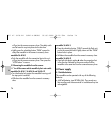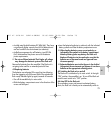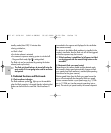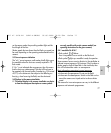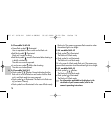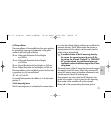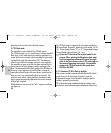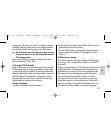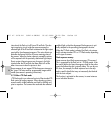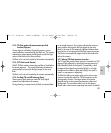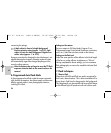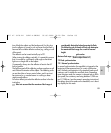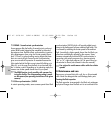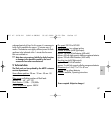
background with contre-jour shots. The camera’s computer-
controlled metering system sets the most suitable combina-
tion of shutter speed, working aperture and flash output.
Ensure that the contre-jour light source does not shine
directly into the lens as this will mislead the camera’s
TTL metering system!
In this instance there is no setting or display on the meca-
blitz for automatic TTL fill-in flash.
5.7.2 Canon E-TTL flash mode
The E-TTL flash mode is an advanced variant of the “normal”
TTL flash mode. Prior to shooting, the reflection of the subject
is measured by way of a preflash. The camera evaluates the
reflected preflash light so that the subsequent flash exposure is
optimally adapted to the prevailing photographic situation
(see operating instructions of your camera). The measuring
preflash does not contribute to the exposure.
Settings and displays
• Switch on the flash unit and the camera.
• Lightly touch the camera’s shutter release for data exchan-
ge between flash unit and camera.
• The E-TTL flash mode is automatically activated when the
camera supports this mode. E-TTL then lights up on the
flash unit.
FE flash exposure storage
Some Canon cameras offer the possibility of FE flash expo-
sure storage. This is supported by the flash unit in the E-TTL
flash mode.
FE flash exposure storage in E-TTL mode permits the amount
of light required for the subsequent shot to be determined
and stored prior to exposure. This can be expedient when
flash exposure has to be adapted to specific details that
may not necessarily be identical with the main subject.
Focus the camera’s AF sensor metering area on the zone
whose flash exposure is to be predetermined. When the FE
button on the camera is actuated (the designation may vary
with individual camera models - see camera’s operating
☞
81
ķ
707 47 0178.A2 36AF-4-CNOPS 05.06.2008 8:29 Uhr Seite 81




